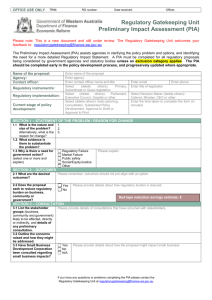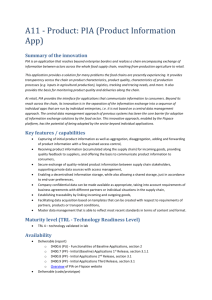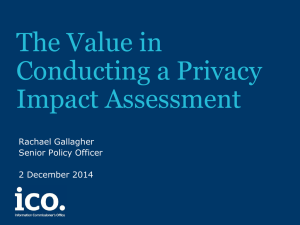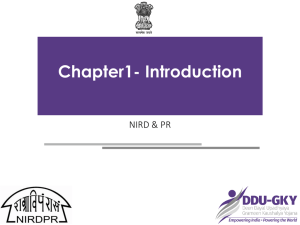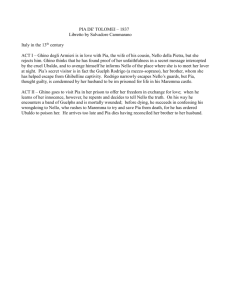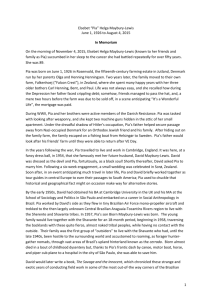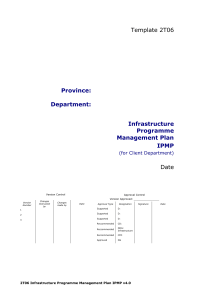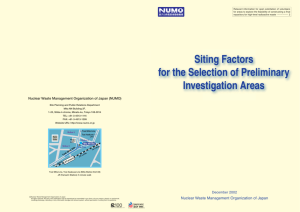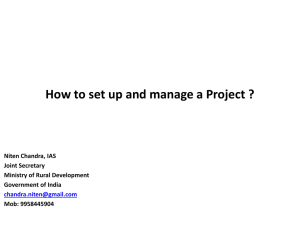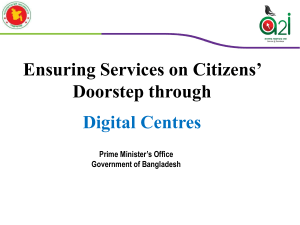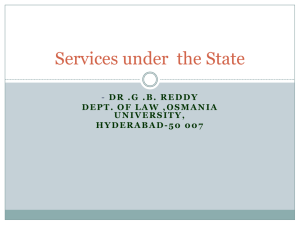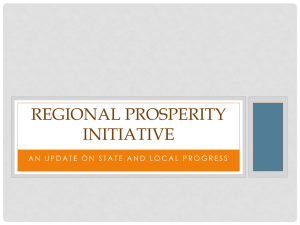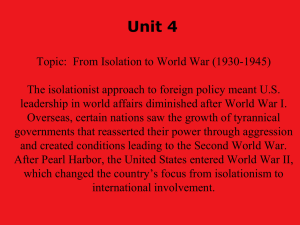Summarizing the Issues - DDU-GKY
advertisement
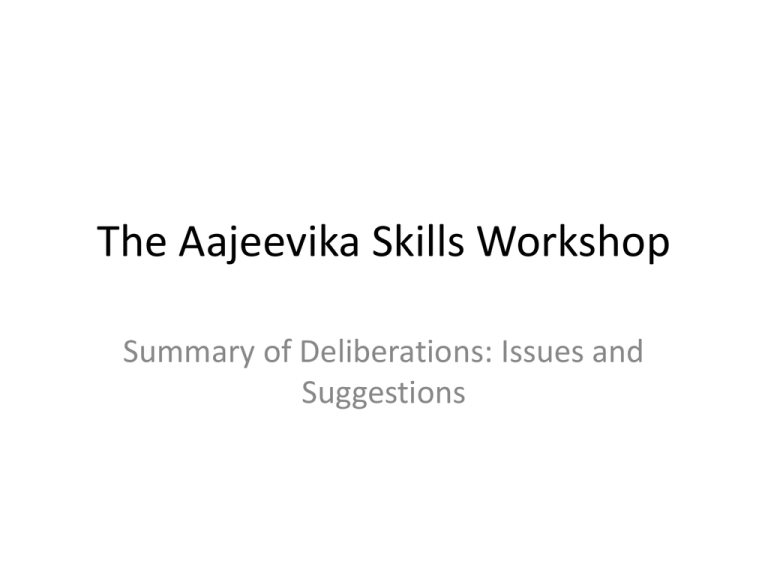
The Aajeevika Skills Workshop Summary of Deliberations: Issues and Suggestions Overview of the Presentation • • • • A: The Key Challenge of the Program B: The Key Tension that exists in the Program C: The Overall Approach of the Program D: Un-packing the Guidelines – Suggestions of changing various Guidelines – Keeping in mind the Challenge and the Tension A: The Key Challenge How to bridge the gap between Youth and Industry Transition through Reality of the Youth Highest need Psychological Security. Higher pay Job security; Security of known people, places. At the bottom of the Maslow Hierarchy Wrong for us to expect Entrepreneurship behavior 9 mth trng, English, Workplace in classroom, Qlty counseling Use of SHGs, village support groups Policy change wrt Industry Guidelines & processes that support quality work Need of the Industry Multi skilled Able to adjust to 3 shifts Productive from day one B: The Key Tension of the Program (based on an Outsiders Perception) • Core Tension: – We are a donor, but can we be humble and helpful. Not policing but facilitating? • Tension appears in relationship between the states and PIAs – PIAs: • Feel Frustrated, feel de-meaned. • Want Efficiency – States: • Feel Suspicious, feel angry • Want Quality for money • Practical implications: – For PIAs: • Outcome oriented simplification of guidelines • Making Govt. infrastructure available. • Quick release of money – For States/MORD: • The Right kind of PIAs • Right quality of work Resolving the MORD/State – PIA tension The Need of the youth The Need of PIAs: outcome oriented simplification of guidelines, efficient response The Need of States: Quality results by adhering to Standardized guidelines Part C: Suggestions for Working Approach • Vis-à-vis Youth – – – – • Youth centered tracking Increasing trainings with local cultural relevance Community Participation Loan to Youths Vis-à-vis Training – Replication of work place in class room • Vis-à-vis PIAs – Master PIA as mentors – Building skills of local and small PIAs – MORD to obtain independent feedback • • Supporting PIAs to work efficiently MORD/SG alignment on values that respect – Youth – Employees – PIAs Part D: Key Suggestions that deal with the Guidelines Youth centred Actions • Identify/Promote local Employers – Women, and many others don’t want to migrate • Certification of Youth – training completion certificate which is recognised by government institutes for employment. – Training certificate should provide concession in course fee for Diploma/ Graduation programs through open universities • Monitor quality of Facilities • A, B, C categorization should not impact youth (e.g. tablets for all, or for none!) • Mobilization/Enrolment : o Sensitization Workshops for village level functionaries. o o o PRIs, CBOs Other functionaries (teachers, ANM) • Follow up Support: o Centralized call center apart from the one with the PIAs Mobilization • Local NGO and agencies for mobilization (Community Based Organizations) • Go beyond BPL list (identification from existing IOP), • No rural urban divide (redefine beneficiary) • Allow even graduates to come. • Mobilization EGMM Model-MH • Develop Specific Strategy for women • Training Centre nearer home Selection of PIA • Selection of PIA: – Community based selection (e.g. in TN) – Greater focus on local and small PIAs. – Assess capability of PIA • Assess quality of Trainers – Don’t allow Franchisees • Otherwise follow EGMM model - Binds both franchises (70%) & PIAs (30%) – – – – – Foreclose existing projects based on Sub-letting model. Promote Sister Organizations as Consortium SRLM can advocate for local PIA as partners with national PIA Preference to PIA offering courses of more than 3 month duration Minimum qualification for Trainers required • Promoting /developing local PIAs – Master PIA for Districts, Handholding of local PIAs, (Maharashtra Experience) – Train & tune the local PIA to become A/B category Location and Categorization of PIAs • Locating PIA projects – Focused in one region rather than spread out thinly (e.g Milk Collection Route) – Ensure Regional Balance – Area Saturation approach – One State-One PIA-Single Project (But need to balance against viability for PIA) • Redefine Criteria for categorization of PIA – Remove outside PIA without local understanding and experience from category A – PIA need to proper Skill gap analysis study) Supporting the PIA • Administrative Support – – – – – – – Long incubation period for PIAs before first training. Make Administrative costs part of total costs (not just 25%) Long term and sizeable projects to ensure viability and continuity TAT for Payment – EGMM 20 days Defined processes and protocols for all appraisals All information to be in public domain Allow combination of class room, OJT and distance education for a long term program – Gradation of partners based on value alignment • Work related support – NRLM/ SRLMs to have dynamic engagements with employer industries; – annual conclave, – centralized database of available jobs/ Job melas at district level/ engagement with SSCs – Develop suitable technological infrastructure for tracking – Re-define placement including informal employment. – Regular partner meets Monitoring, Evaluation, Placement • Quality Monitoring – Monitoring past performance – Concurrent monitoring – MoU/Coordination between SRLMs for Physical verification of placed youth based on mutual willingness • Assessing quality of output/training – – – – – Define Training curriculum Standardize Evaluation Define Certification India skill certification for all trades and in all areas involve SSC • Standardize Evaluation Process – Make it 3 step • Placement Tracking Miscellaneous • Trainees entitlement should be same – A to C Category (like tablet …) • Industry-PIA relationship: – Employment Engagement Council – Dynamic Engagement with Employers – Long term MOUs – Assessing Industry need Conversion to AAP • Budget for data-base creation – BPL youth available, being trained, and tracked after placement. – To prevent duplication – Data base collection at Village level-MP • • • • Detail out required Staff structure Administrative cost of 5% for smaller states low Separate HR cost be allowed for skills NIRD (TSA) representative to be placed on permanent basis in each state Functioning of the MORD • Change in attitude from charity to business model (getting rid of existing SGSY-SP) • Modalities of release of State Govt. share • Standardization in Protocols for implementation of Aajeevika Skills • Alignment of State Govt. implementation process with Central Govt. for common branding • Closure/conversion of SGSY (SP)-Implementation of Aajeevika Skills as per para. 4.9 of the Guidelines, 2013 • To set up minimum standard for various activities and stakeholders, viz.- mobilization, training centre, course curriculum, certification, assessment of candidates, placement, tracking etc. • ISO like certification process • Work for stability in the policy for at-least 3 years MoRD related suggestions • MoRD team can be strengthened in terms of continuity the existing staffs for longer period and recruiting new experts, knowledge building in the different areas of the program • MoRD should have their independent feedback with focus on unemployed youth and potential employers • Internal and External concurrent evaluation • Work for Standardization and convergence among the projects offered by other Ministries MoRD related suggestions • Different categories of stakeholders to be categorised • StrengthenTSA substantially • PIA alignment with brand of Aajeevika Skills • Ensure sharing of Identified core values by all core stakeholders • Gradation of partners based on their value alignment • (Ensure integration with Finance team) Other Over-arching Suggestion • Prevent Cannibalization from other programs of Skills/Livelihood – – better youth centred tracking as the panacea? • Deal with duplication of NSDC and other certifications.
